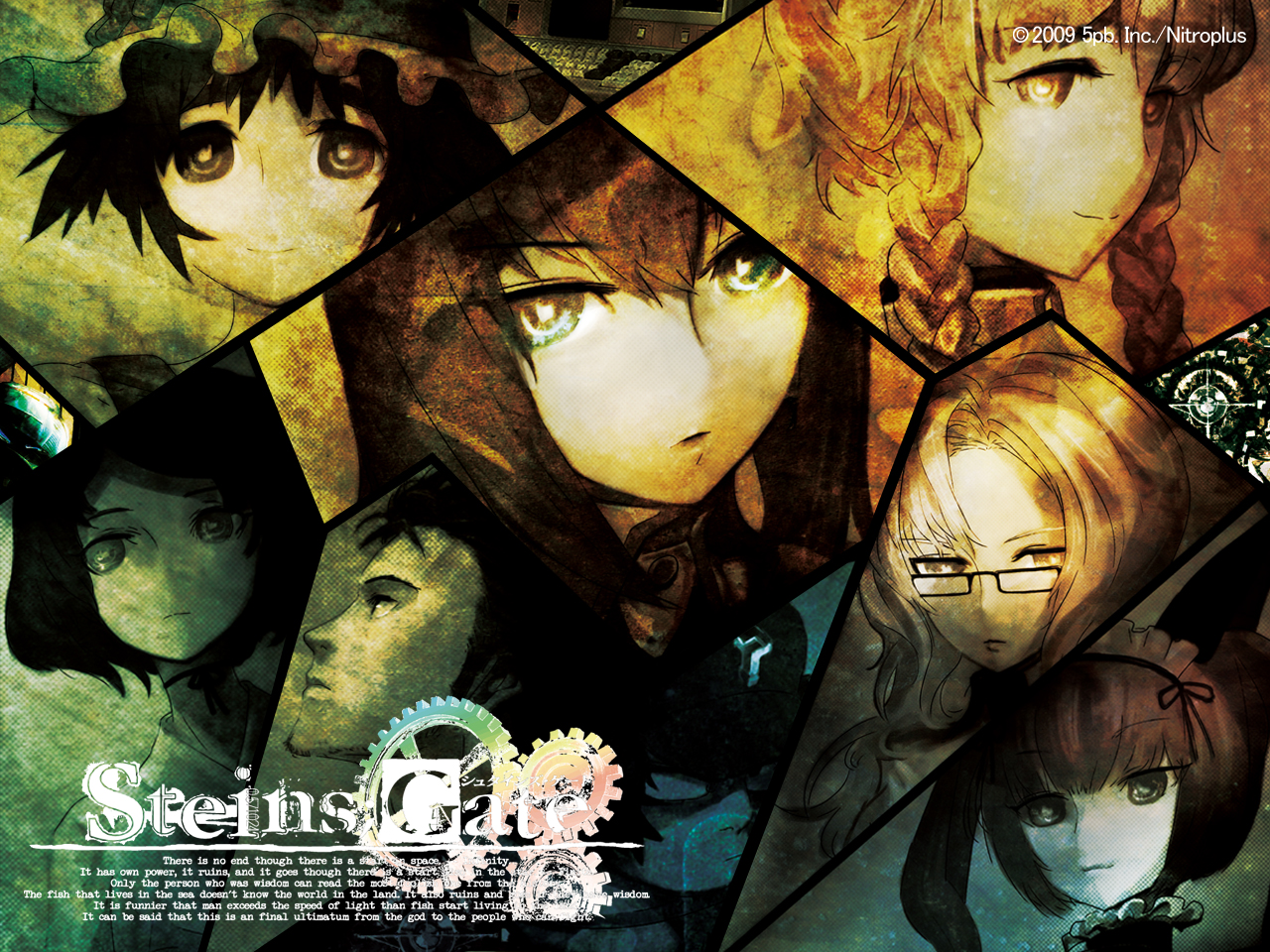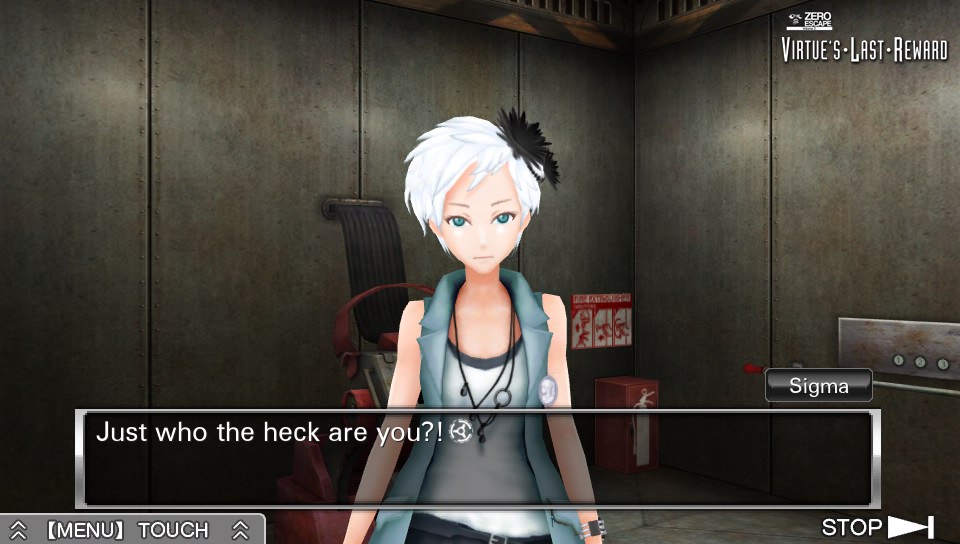Historically, visual novels have been a non-entity in the West. Until the turn of the century, their popularity remained almost entirely contained to their native Japan, with only a few exceptions making it through the localization process. It hasn’t been until the last few years, with the unexpected success of titles like the Danganronpa series and Zero Escape: Virtue’s Last Reward — the latter of which was surprisingly more popular on this side of the ocean — that the genre has made any headway with Western audiences. With the highly anticipated Steins;Gate making its way to the Vita this week, let’s take a look at what exactly makes this genre tick.
Must-Read:
Even if you’re a fan, the visual novel’s niche status probably doesn’t come as much of a surprise. In many ways, the genre seems an order of magnitude apart from what most people play video games for: it’s slow, text-heavy, generally offering only a few choice opportunities for interactivity. In fact, it’s different enough to make some people wonder what exactly the appeal is, but it’s becoming clearer and clearer that the changing tides of the industry are really the answer to that question.
As the universe of mainstream games continues to grow and adapt to the times, it often sends out an anomalous ripple effect that somehow pulls the niche a little bit closer to center stage. As an example, storytelling has found new importance as an essential part of AAA titles, particularly as it’s made use of the medium’s interactivity. This probably accounts for at least some of the success of the visual novel, which often allows players to change the outcome of the story being told. In the best examples, it even makes players feel like they’re an active part of the narrative — no small order for anything that involves reading oodles of text.
Part of what helps keep visual novels part of the wider world of video games, rather than just being semi-interactive fiction, is the way the games find unique ways to take player input. Obviously, interactivity is the central part of gaming as a medium; allowing players unique ways to shape their version of the story is crucial to any game’s effectiveness. This isn’t the simple stuff from the days of text adventures, like choosing which room to visit or what item to pick up. These are choices and experiences that bring players right into the narrative itself to help feel like they’re influencing its outcome — even if, as is true in many cases, it has been predetermined.
Here are seven different ways that visual novels have let players dive beyond the text to make important decisions. Please note that not all of the following titles have been explicitly labeled “visual novels”; many of them cross genres in ways that benefit the aforementioned interactivity, but all are at least known for possessing significant elements of the genre that make them part of its niche.
How Visual Novels Like Steins;Gate Bring Interactivity and Reading Together
-
Danganronpa (series): Courtroom Showdown

Danganronpa is a set of two visual novel games on the PS Vita (and there’s a third game in the series, a third-person shooting adventure, hitting North American shores on Sept. 1 of this year). Both games follow the exploits of high school students as they’re participate in a deadly murder game, and figuring out whodunnit is the interactive centerpiece.
After investigating each death and gathering evidence, players take a break from reading text so they can instead shoot at it. If this sounds weird, it is: during the game’s intriguing “courtroom” sections, you play a series of different minigames to sort out the truth from the lies and uncover the identity and motive of the killer. These include shooting down erroneous bits of testimony from fellow students with “Truth Bullets,” breaking through the lies of suspicious people with a rhythm game, and constructing a comic that reflects what actually happened before and after the killing.
It’s strange for sure, but it’s also a surprisingly dynamic and intuitive way to put the player in the middle of the action -- and it makes court way more exciting than it usually is.
-
Zero Escape: Virtue's Last Reward: Room Escape
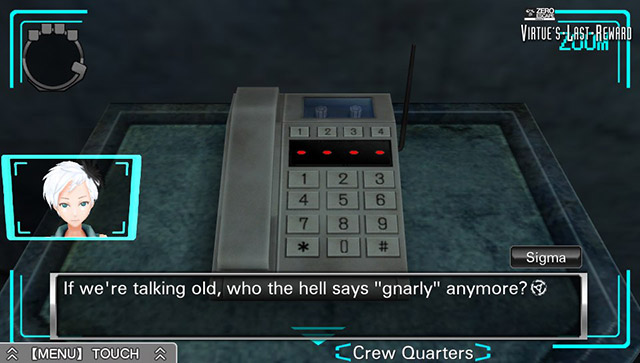
Virtue’s Last Reward for PS Vita is the second game in the surprise hit Zero Escape series. It’s a cerebral franchise with heady themes including quantum mechanics, morphogenetic field theory, and moral ambiguity. If that all sounds a bit too academic for your tastes, don’t worry: Kotaro Uchikoshi’s mind-bending story is told in vivid prose that’s fun to read and easy for anyone to understand, and all the learned concepts are really just a backdrop to a story driven by its complex and fascinating characters. The series has become so popular here that the third game -- previously on hiatus due to a lack of funds -- received a hype-tastic announcement at Anime Expo.
One major interactive piece of the game involves the concept of a “room escape game.” At several points in VLR’s narrative, you’re locked inside a room and must find your way out by investigating and solving a series of puzzles. Because you’re never alone inside these rooms, they’re an ideal place to squeeze in some details about the characters you’re with. They’re also a good deal of fun and unbelievably satisfying to solve.
You can also change the story’s arc in the AB game, which plays off the mathematical concept of the “prisoner’s dilemma.” The larger narrative involves escaping a place in which all the characters find themselves trapped, and to do this they must procure a certain amount of points. After each room escape, everyone is given the choice to either ally with or betray their partner(s) from that series of puzzles. If you both choose to ally with each other, you each receive a modest amount of points; if you choose to ally and they choose to betray, you lose points and they gain even more than if you had both allied (and vice versa); and if you both choose to betray each other, nobody gets or loses anything.
It’s a decision that lends palpable tension to the proceedings, and there are consequences for whatever choice you decide to make.
-
Hatoful Boyfriend: Dating Simulation

Hatoful Boyfriend began as an April Fool’s joke and evolved into one of the funniest otome (“girl game”) titles to make it to the West. It’s a dating simulation that came out for PS Vita and PS4 this year in which all the suitors are pigeons, and it has a delightful sense of absurdity and self-awareness that make its dialogue something to behold.
As is customary for dating sims, your actions in the game determine which bachelor you’ll end up with. Attend certain classes, build up the right stats, choose specific dialogue, and you may just end up with the pigeon of your choice. Of course, this is less than half the battle; even if you manage to swing a date with all the birds, there’s still an overarching plot taking the form of a psychological thriller that has to be seen to be believed.
-
Steins;Gate: Phone Trigger
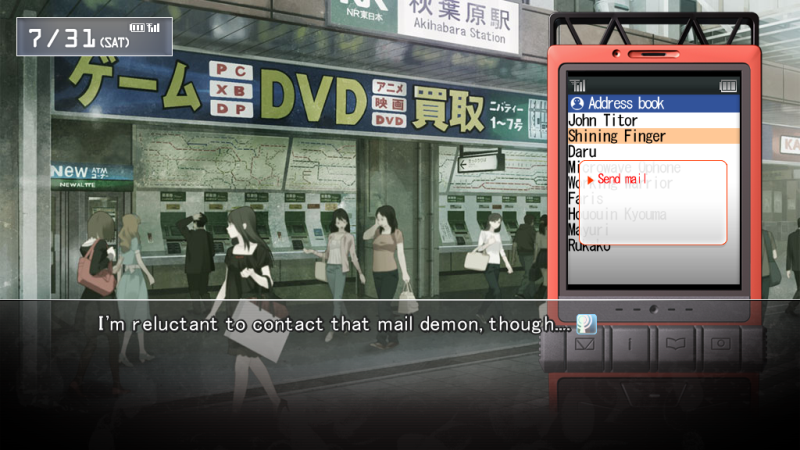
Steins;Gate has received critical acclaim for its narrative as both a visual novel and an anime, and the former just made its debut on PS3 and Vita. It plays around with two beloved concepts in fiction -- that of time travel and the consequences of one’s actions -- to dramatic effect. Like many of its contemporaries, its plot is tightly wound and involves the intersection of countless colorful personalities, and dialogue plays an enormous part in all of it.
To that end, the conversations you have with these characters are the heart and soul of the game’s interactive element. Using a trademark “phone trigger” system, you’ll sometimes have to answer a call or text from someone in the middle of the story. With certain critical elements of the text highlighted, you can pick and choose how to respond in different ways to other people -- and though it may not seem like much at first, these reactions can have drastic effects on the future.
Like the other choices on this list, Steins;Gate succeeds because it finds a way to incorporate player input that actually feels important. It’s tense, dramatic, and makes choosing your words carefully a lot more fun than you might think it would be.
-
Corpse Party (series): Dying A Lot
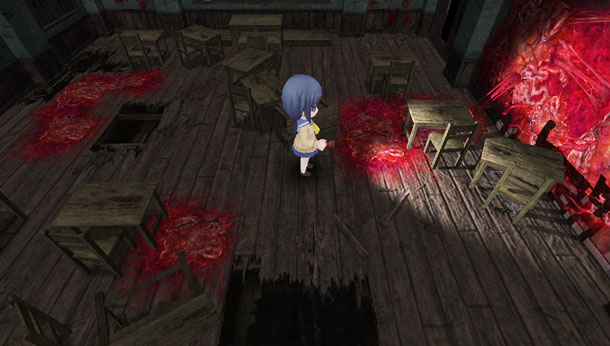
Corpse Party might be considered an adventure game series, but its chatty casts of characters fit in just fine with the other titles here. Getting its start as a simple project made in RPG Maker, the series’ first game took off in Japan and never looked back -- there’s a feature film out now, as well as a Vita sequel that’s coming on Oct. 13. As you might guess from the title, it’s got a survival horror them and involves the exploration of a haunted elementary school where lots of children were killed. Charming.
Unlike some of the other games here, Corpse Party’s titles actually involve walking your character around and investigating things in the third person. They also involve getting killed rather a lot; if you do something that’s irrelevant to the game’s plot, expect to lose HP or end up dying a viciously gruesome death. People easily frustrated by trial-and-error might want to keep a guide handy for this one, but for horror fans, there’s plenty of disgustingly creepy (and sometimes even funny) eye-candy to keep you busy for a while. -
Tokyo Twilight Ghost Hunters: Paranormal Investigation
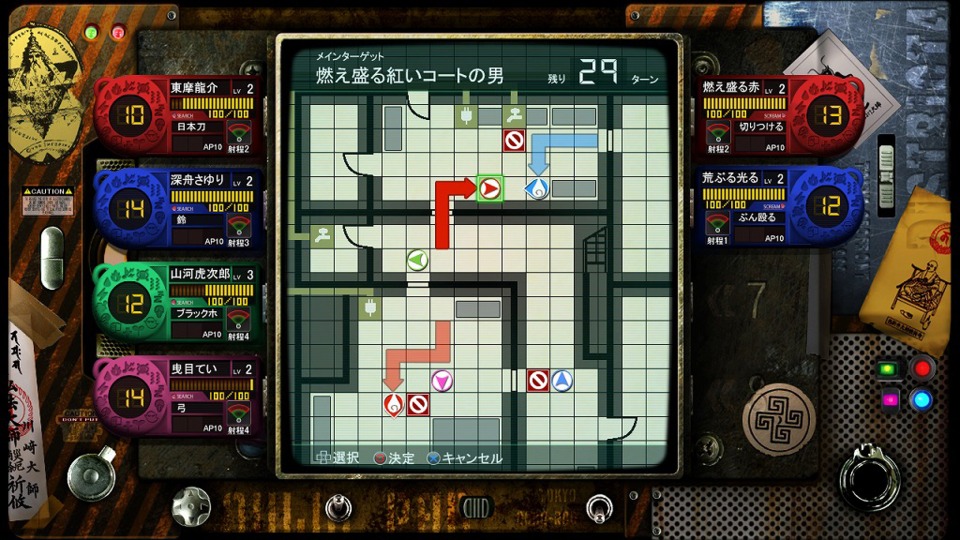
Debuting on PS3 and Vita earlier this year, Tokyo Twilight Ghost Hunters was created by Hidetaka Suehiro, the director behind cult horror phenomenon Deadly Premonition. This one’s about a bunch of paranormal investigators that are, you guessed it, high schoolers in an impossibly overfunded after-school ghost-hunting club at the fictional Kurenai Academy.
You’ll take on all manner of paranormal activity in the game’s strategy sections between the novel chapters, each of which involve you remotely helping your friends catch a ghost as they explore haunted locations. This is a two-step process of exposing the entity and then confronting it; the first involves a board game-esque game of cat-and-mouse, while the latter takes the form of first-person RPG battles a la Shin Megami Tensei.
You’re going to grow to care about the outcome of these ghost-hunting missions, of course, thanks to the novel sections in the first place. These allow you to form relationships with other members of the Gate Keepers by choosing dialogue responses, and though the outcome sometimes unfairly arbitrary, the characters are written well enough to be as lovable as you’d expect from a piece of Japanese science fiction. -
Lost Dimension: Uncovering Betrayal
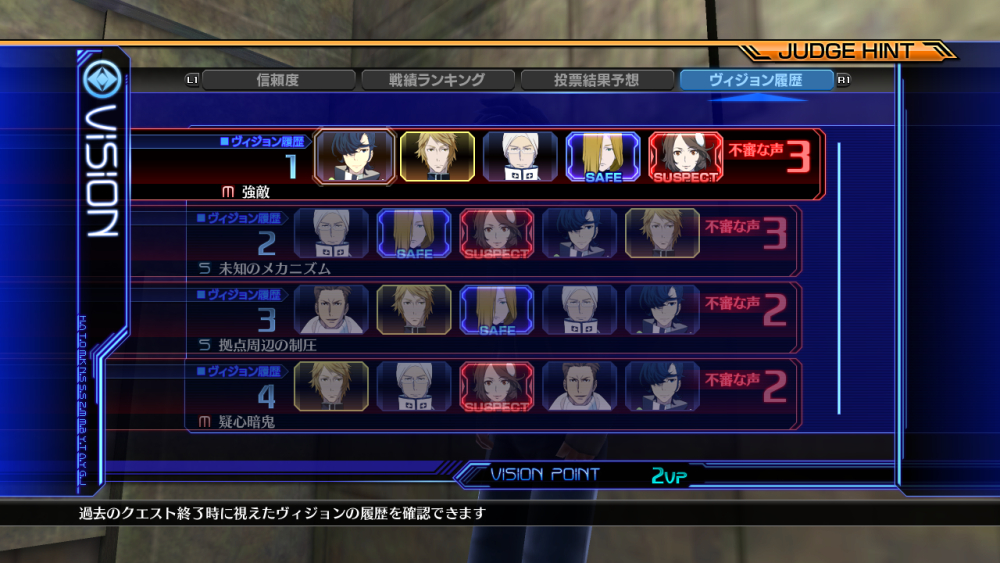
In what is likely to surprise exactly no one, Lost Dimension -- another PS3/Vita title from this year -- plot follows a group of fairly good-looking young people as they take on a destructive organization led by a mysterious man of questionable identity before they can obliterate the very world we live in. Okay, that sounds like a mockery, but of course the game spins its been-there-done-that yarn with a lot of charm and tension that makes it well worth the price of admission. It’s also been given a nice English localization by Atlus USA, well-known for their excellent work on the Persona series.
While the main chunk of the game is really an RPG, the narrative and player-driven choices all take place within the context of the visual novel portion. The gimmick here is that there are a series of people who have betrayed you, and after completing each role-playing section it’s your job to weed out the traitor and have them eliminated. This involves studying what each character says very closely, and also piecing together bits of evidence that might paint them as the mole in your midst. Amazingly, even if you draw the wrong conclusion, the game keeps going -- meaning your choices have lasting and important consequences. If that doesn’t add tension, we don’t know what does.

